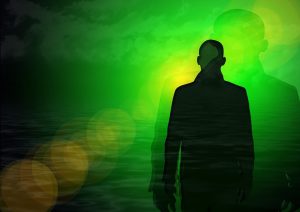 Why the term “Conspiracy Theorist” will never be permitted on the show
Why the term “Conspiracy Theorist” will never be permitted on the show
You will NEVER hear the term “Conspiracy Theory” or “Conspiracy Theorist” on this website or on my show. It is a derogatory term and will be actively fought against the minute it is applied to either me or my guests.
I take note that many so-called authoritative web sites and organizations spread disinformation by trying to muddy the waters with false definitions and twisting of the truth to fit the agendas they cater to.
This article is designed to counter their claims and writing with facts and supportive evidence.
To learn more about the terminology:
The term “conspiracy theory” brings to mind all kinds of connotations that range from outlandish to crazy. These associations with the phrase were intentional and exactly what the CIA (Central Intelligence Agency) intended.
According to Zero Hedge, the term Conspiracy Theory was created by the CIA in 1967 as a way to discredit anyone who dared to challenge their official version of the truth. The original Zero Hedge article is shown in a PDF below and includes copies of the CIA dispatch document to view.
Conspiracy-Theory-And-Theorists-Invented-By-CIA” — PDF (will open in PDF software or browser)
How It All Started
It seems that the Conspiracy Theory CIA brainchild was first revealed in a 1976 dispatch.
This communication was marked “Psych” and “CS”. The psych abbreviation referred to psychological operations or what is better known in the modern world as disinformation. The CS was the abbreviation used for their Clandestine Services unit.
Why was a dispatch sent out? According to Zero Hedge, it was generated in “response to a Freedom of Information Act request by the New York Times in 1976.”
The dispatch first discussed how concerning this trend of requests was to the organization as well as the US government. The missive went on to explain the purpose of the dispatch, which was to “provide material countering and discrediting the claims of the conspiracy theorists, so as to inhibit the circulation of such claims in other countries.”
If there wasn’t any discussion already taking place, then the question of it being a conspiracy wasn’t to be brought up. Only where a discussion was underway was the conspiracy question to be inserted and used to create doubt.
How to Insert Conspiracy Theories
The first directive was to discuss how this was a publicity problem with “friendly elite contacts (especially politicians and editors).”
This directive was aimed at gaining the support needed to change the narrative into one of conspiracy.
Instructions included:
- Point out a thorough investigation [official investigation of the relevant event] was conducted “as humanly possible.”
- Critics’ allegations are without “serious foundation”.
- To continue “speculative discussion” only helps “the opposition”.
- “Point out also that parts of the conspiracy talk appear to be deliberately generated by … propagandists.”
- “Urge them to use their influence to discourage unfounded and irresponsible speculation.”
Critic Attack Strategy
The next step was to “employ propaganda assets“. The sole purpose of these “assets” was to refute anything the critics had to say. Some of the disturbing tactics included:
- “Book reviews and feature articles are particularly appropriate for this purpose.”
- Whenever applicable, the asset was to discredit by claiming the critic was “wedded to theories adopted before the evidence was in.”
- Critics were to be attacked as having political interests for their viewpoints.
- Another tactic was to claim the critic had a financial interest.
- One way to discredit a critic was to claim they were “hasty and inaccurate in their research”.
- And the icing on the discrediting cake was to claim that the critic was “infatuated with their own theories”.
Attacks on the Media
The dispatch also covered how to assault any writer or publication that disagreed with the official narrative.
- “No significant new evidence has emerged which the Commission did not consider.”
- “Critics usually overvalue particular items and ignore others.”
- Critics value and emphasize “recollections of individual witnesses”. The dispatch explains how this can be used to elaborate that witness testimony is “less reliable and more divergent”.
- Talking point that a conspiracy “on the large scale often suggested” is impossible to hide with so many people involved and too expensive to pay informants to remain silent.
- Point out that the “intellectual pride” of some critics entices them to connect with a theory. This fuels them to “scoff at the Commission because it did not always answer every question with a flat decision one way or the other.”
- Deflate charges of a Commission rush job on the report by stating it came out three months after the original deadline. Blame Commission speeding up report on “pressure of irresponsible speculation” as well as the same critics refusing to admit error and voicing new criticisms.
- Vague accusations “can always be explained in some natural way.”
Making It Law
Perhaps the most troubling aspect of the conspiracy theory initiative is how ingrained it became into US law.
Zero Hedge examined this in depth, discovering that judges are “trained to look at conspiracy allegations as just another legal claim to be disproven or proven based on the specific evidence.”
- “Federal and all 50 states” have codes that include statutes and punishments for anyone committing a conspiracy.
- Law schools teach conspiracy law as a “fundamental legal concept”.
Accuse Conspiracy and Escape Detection
The creation of conspiracy theory has been so well-executed with the indoctrination of the average American.
Anything tagged conspiracy theory is automatically discredited. A conspiracy theorist is considered unhinged or at the very least, delusional and misguided.
When this stereotype is backed up with conspiracy theory law, it allows real conspiracies to remain hidden. This one phrase taints and discredits whistleblowers and anyone else seeking to expose the truth.
